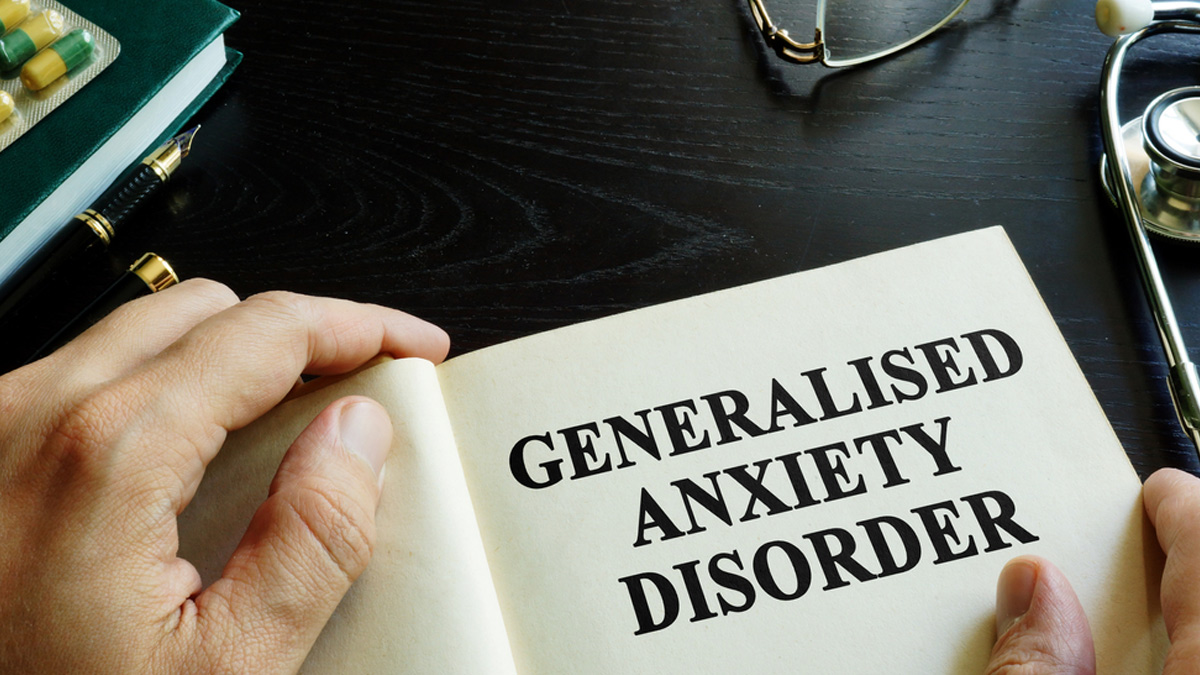
Have you ever wondered if your daily anxiety is just a natural response to stress or something more? Everyone experiences nervousness before a big meeting or a tough conversation, but when worry becomes constant and overwhelming, it might be something beyond everyday stress. Generalised Anxiety Disorder (GAD) and normal anxiety can sometimes feel similar, making it difficult to tell the difference.
Table of Content:-
CHECK YOUR
MENTAL HEALTH

Understanding their key distinctions is crucial in recognising when to seek help. We spoke to Archana Singhal, Counsellor and Family Therapist, Mindwell Counsel, Delhi, who helped differentiate between normal anxiety and GAD.

Anxiety, at its core, is a survival mechanism. It helps us prepare for challenges and respond to potential threats. According to StatPearls, anxiety is closely tied to fear. It presents itself as a forward-looking mood state. This mood state involves a complex interplay of cognitive, emotional, physical, and behavioural responses. These responses are aimed at preparing for expected events or situations that are perceived as threatening.
Generalised Anxiety Disorder (GAD)

"GAD is a mental health condition that causes fear, worry and a constant feeling of being overwhelmed, affecting children and adults. It is characterised by excessive, frequent and unrealistic worry about everyday things, such as job responsibilities, health or chores," said Singhal.
When you have GAD, it's like your worries and nervousness are stuck on repeat. You might know that your fears are exaggerated, but you can't seem to shake them off. GAD symptoms might change over time and are frequently more severe during stressful situations. According to the Johns Hopkins Medicine, symptoms of GAD include:
- Trouble falling or staying asleep
- Trembling
- Twitching
- Headaches
- Grouchiness
- Sweating
- Hot flashes
- Lightheadedness
- Difficulty breathing
- Nausea
- Frequent urination
- Lump in the throat
- Fatigue
- Trouble focusing and making decisions
- Inability to concentrate
- Being easily startled
- Unable to relax
These symptoms often persist for months or even years, significantly impacting daily functioning, work, and personal relationships.
Also Read: How To Avoid Spiraling Thoughts, Expert Explains
Normal Anxiety
-1741147736790.jpg)
"Everyone experiences anxiety at some point, especially when faced with stressful situations like exams, work deadlines, or significant life changes. This is known as normal anxiety or situational anxiety," explained Singhal. Symptoms might include a racing heart, sweaty palms, or a sense of nervousness, but they are proportionate to the situation and do not interfere significantly with day-to-day activities.
The key difference is that these feelings are proportionate to the situation, manageable, and subside once the stressful event has passed.
Key Differences Between GAD and Normal Anxiety
Here are some key differences between GAD and normal anxiety listed by Singhal:
- Duration and Frequency: Normal anxiety is temporary and situation-specific, while GAD lasts for six months or more and is present most days.
- Impact on Daily Life: GAD disrupts work, relationships, and overall functioning, while normal anxiety usually does not cause significant impairment
- Intensity: GAD involves excessive and uncontrollable worry, whereas normal anxiety is normally proportionate to the situation.
Also Read: Is Your Gut Making You Anxious? Expert Explains This Overlooked Cause of Anxiety
When to Seek Help
If anxiety becomes overwhelming, persistent, or begins to interfere with daily activities, it may be time to seek professional help. Some signs that indicate a need for intervention include:

- Feeling anxious most days without an apparent reason.
- Struggling to control worries, even about minor things.
- Experiencing physical symptoms like nausea, headaches, or rapid heartbeat frequently.
- Avoiding situations due to excessive fear or anxiety.
- Noticing a decline in work performance or relationships due to anxiety.
Bottomline
Singhal concluded, "While normal anxiety is a common, natural response to stress, GAD is a serious mental health condition that requires treatment, such as Cognitive-Behavioural Therapy (CBT) or medication, to help individuals manage their symptoms effectively. If you or someone you know is experiencing anxiety that affects daily life, seeking professional help is an important step toward recovery."
[Disclaimer: This article contains information provided by an expert and is for informational purposes only. Hence, we advise you to consult your professional if you are dealing with any health issue to avoid complications.]
Also watch this video
How we keep this article up to date:
We work with experts and keep a close eye on the latest in health and wellness. Whenever there is a new research or helpful information, we update our articles with accurate and useful advice.
Current Version